Introduction
Carbon markets have evolved as critical tools in addressing global climate change concerns. Among the innovative concepts making waves within these markets is the utilization of biochar - a charcoal-like substance with immense potential to revolutionize carbon credits.
Biochar, recognized for its enduring carbon sequestration capacity and multifaceted benefits, is emerging as a significant player in the carbon offset landscape. In this article, we delve into the groundbreaking realm of biochar carbon credits, exploring its origins, applications, and burgeoning role in climate change mitigation.
Unveiling Biochar Carbon Credits
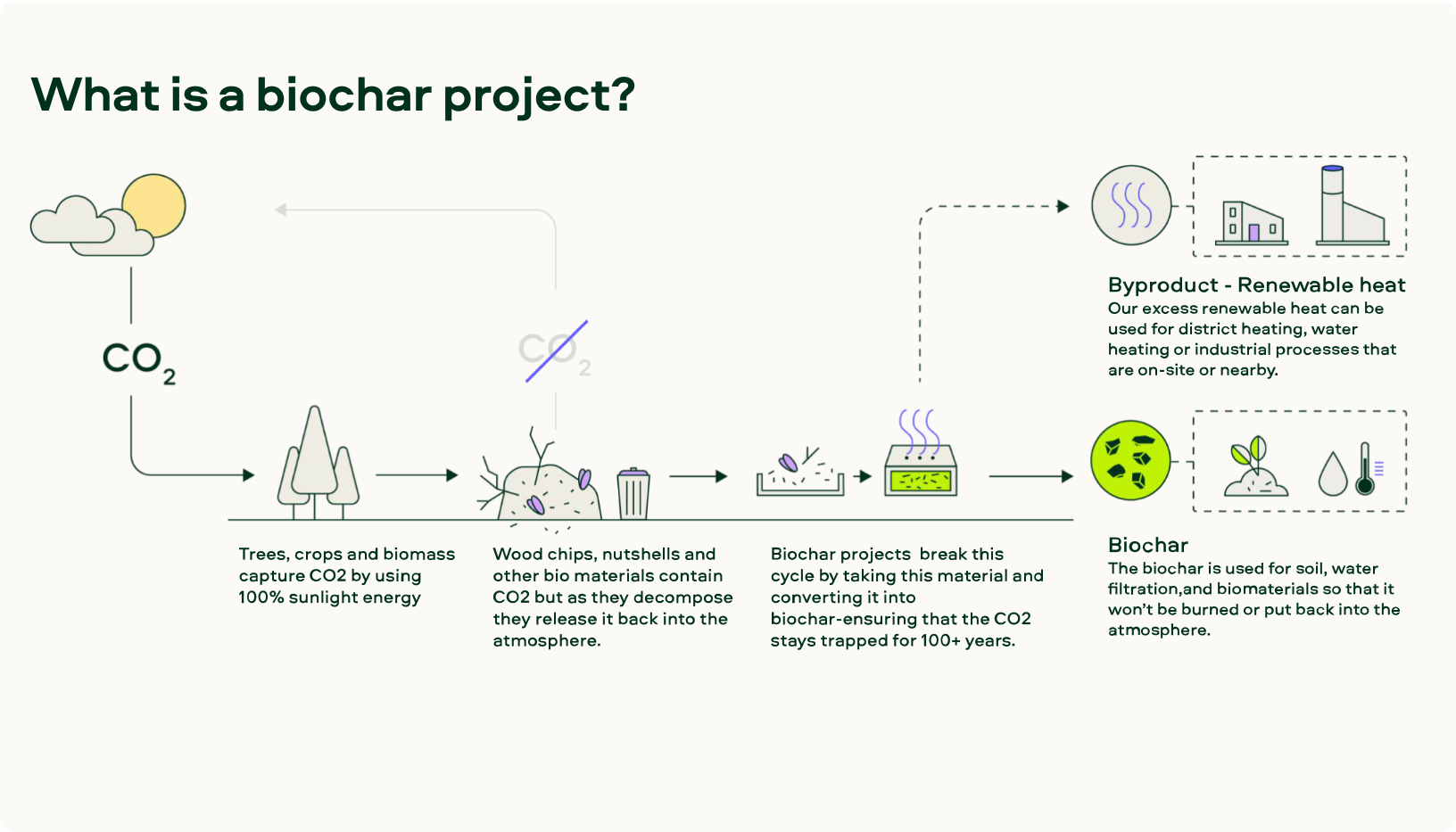
Figure 1: A flowchart showcasing the steps of a Biochar Project (Source: Sylvera)
Defining Carbon Credits and Biochar Carbon Credits
Carbon credits encapsulate the reduction, avoidance, or sequestration of carbon dioxide equivalent (CO2e) emissions. A unique subset of these credits is the biochar carbon credits, symbolizing the permanent sequestration of carbon. Distinguished by its remarkable permanence, biochar's carbon sequestration stands apart, presenting a long-term carbon lock-in mechanism.
Biochar and Amazonian Terra Preta
Harking back to the 1540s, the Amazon's terra preta soils captivated Spanish explorer Franciso de Orellana. These soils, abundant in nutrients, owe their fertility to biochar - a product crafted by ancient Amazonians. Biochar is generated through pyrolysis, a process of biomass burning without oxygen. This enduring tradition laid the foundation for biochar's contemporary renaissance as an agricultural treasure.
Biochar's Multifaceted Potential
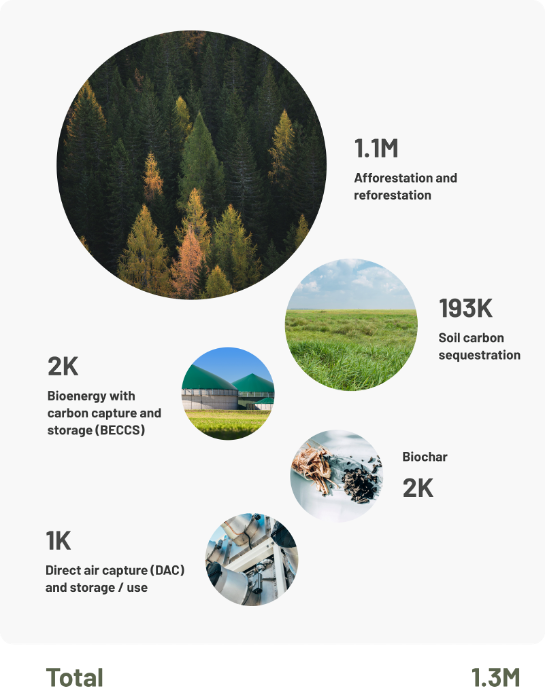
Figure 2: Microsoft’s carbon reduction and removal portfolio (Source: Übermorgen Ventures.)
Biochar, often dubbed "black gold," serves as an agricultural and environmental Swiss Army knife. It redefines waste residues, converting them into a renewable energy source while enhancing soil quality, acting as a pesticide, and reducing methane emissions in livestock. Moreover, its role as a carbon sink, effectively sequestering CO2 for centuries, garners attention from global entities like Microsoft and Shopify.
Empowering Agriculture & Carbon Sequestration
In the face of mounting challenges such as soil depletion and water scarcity, smallholder farmers around the world are in need of effective and sustainable solutions. The concept of biochar has emerged as a beacon of hope for addressing these pressing issues, particularly in regions with impoverished soils and limited resources.
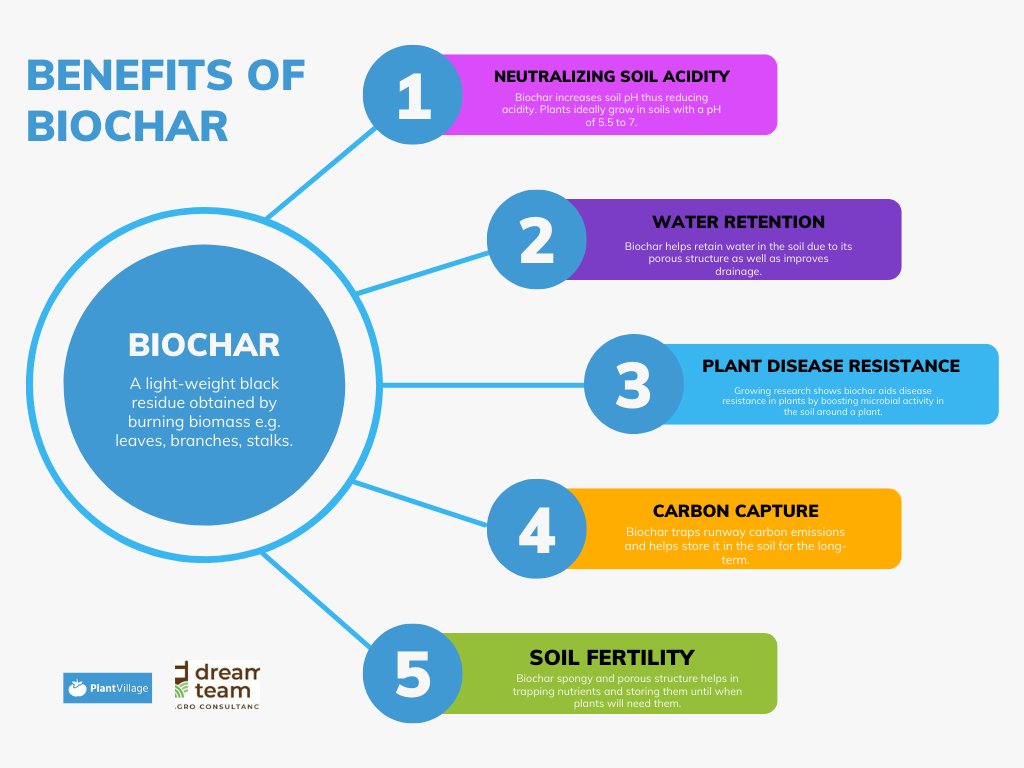
Figure 2: Benefits of Biochar
By integrating biochar into agricultural systems, smallholder farmers can experience a range of benefits that contribute to long-term sustainability. One of the biochar's notable features is its ability to sequester carbon. When biochar is incorporated into the soil, it serves as a stable carbon sink, effectively storing carbon for centuries. This not only helps mitigate greenhouse gas emissions but also improves soil structure and fertility over time.
Furthermore, biochar's porous structure provides an ideal habitat for beneficial microorganisms, promoting enhanced nutrient cycling and water retention in the soil. This is of immense significance in regions where water availability is limited, as biochar-amended soils tend to exhibit improved water-holding capacity, reducing the impact of droughts and ensuring more efficient water usage by crops. The positive impact of biochar extends beyond individual farms, as its adoption can contribute to landscape-level carbon sequestration and improved ecosystem services. This makes it a valuable tool for achieving sustainable land management and supporting global efforts to combat climate change.
Verra's Biochar Methodology
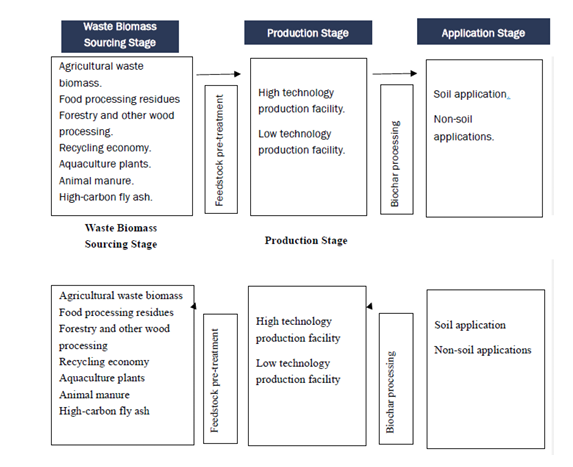
Figure 4: Different Stages of Verra's methodology for biochar utilization in soil and non-soil applications (Source: Verra)
Scaling Up Climate Action
Verra, a key player in catalyzing climate action, is set to release its biochar GHG accounting methodology. Designed to generate carbon credits and attract investments, this framework acknowledges biochar's potential to combat climate change on a global scale.
Biochar's Stability and Storage Potential
Biochar's unique composition endows it with unparalleled stability, offering a long-lasting solution for carbon storage. Studies suggest it could sequester up to 2 GtCO2 annually by 2050, with a promising cost range of $30 to $120 per ton of CO2.
Market Challenges and Incentives
While biochar's potential is undeniable, scaling its adoption has been hindered by market dynamics. However, its remarkable carbon sequestration potential emerges as a compelling incentive.
Biochar and Carbon Credits: Pioneering a New Frontier
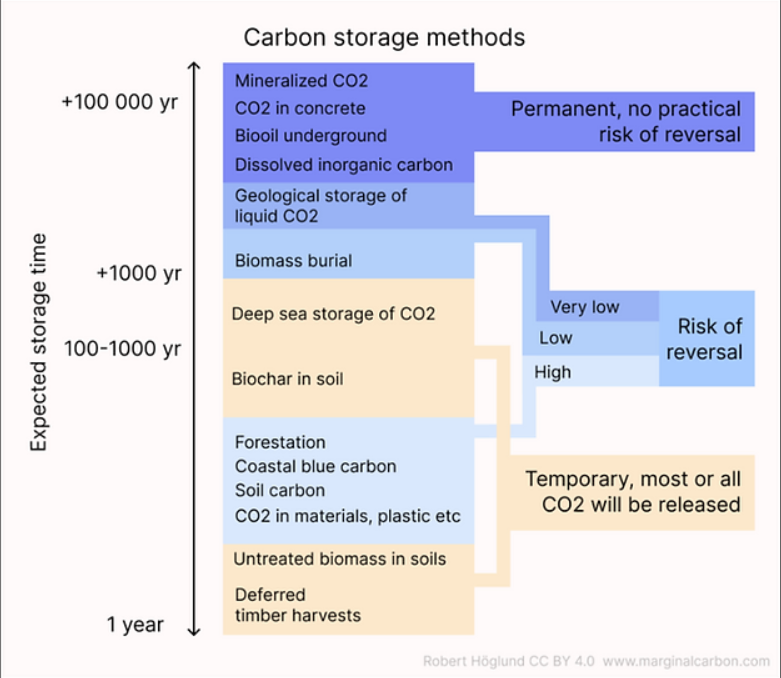
Figure 5: Carbon storage methods by expected storage time, including biochar in soil in the 100-1000 yr range and bio-oil underground in the +100,000 yr range.
Biochar in Carbon Credit Markets
Biochar carbon credits occupy the realm of nature-based removal, a subset of carbon credits. Nasdaq's introduction of carbon removal price indexes, including the CORC Biochar Price Index, underscores the growing recognition of biochar's potential.
Verra's Game-Changing Biochar Methodology
Verra's biochar methodology marks a watershed moment. By quantifying emission reductions and removals across biochar applications, this framework facilitates nature-based carbon credits for diverse biomass sources.
A Vision for the Future
Verra's robust biochar methodology promises a surge in projects upon approval, opening pathways for sustainable climate action and the integration of biochar into global carbon markets.
Conclusion
In the grand tapestry of climate change mitigation, the emergence of biochar as a transformative force within carbon markets paints a promising picture. This journey, from ancient Amazonian terra preta soils to the corridors of modern carbon trading, encapsulates innovation's potential to sculpt a greener future. Biochar, often dubbed "black gold," not only symbolizes permanent carbon sequestration but also redefines waste, empowers agriculture, and entwines its roots with the prosperity of smallholder farmers worldwide.
As Verra introduces its groundbreaking biochar methodology, a new chapter beckons – one where carbon credits embrace the enduring potential of biochar to accelerate climate action. The remarkable permanence of biochar's carbon lock-in mechanism promises a resilient carbon offset solution. Amid challenges and market dynamics, biochar's multifaceted potential and the recognition it gains through platforms like Nasdaq's CORC Biochar Price Index foreshadow its integral role in global carbon markets.
With Verra's methodology paving the way, a vibrant future unfolds, where biochar projects surge, landscapes transform, and climate resilience strengthens. The integration of biochar into global carbon markets holds the promise of a more sustainable and equitable world, where innovative ideas and nature-based solutions converge to combat climate change's daunting challenges.
![[object Object]](/lib_ubcXiSgTRmkLVyyT/k8w528b9mk1p20to.png?w=400)
